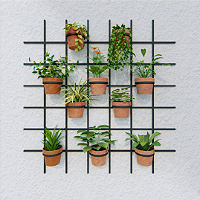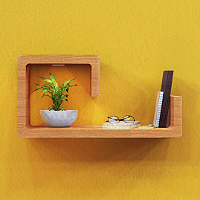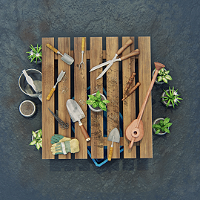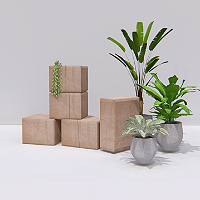Any plant uses a container of some sort to call home. The plant will need its shelter modified to support its growing size and to provide space for its offspring. If you’re repotting your plants anyway—perhaps to give them a facelift or a nutritional boost—they’ll appreciate the adjustment and reward you with a plethora of new blossoms.
We will talk about some peer-reviewed ideas and recommendations for transferring your plant to a more suited and healthy setting.
WHY REPOT PLANTS?
You should definitely repot the plant if it has been thriving nicely in its current container. If the plant appears to be top-heavy, if it has filled the container with new shoots, or if its roots are growing out of the drainage holes, it may be time to repot.
Indoor plants need occasional repotting since it helps them thrive. It improves plant sustainability. Without sufficient nutrients, good soil, and growth space, a plant may perish.
HOW TO TELL IF A PLANT NEEDS REPOTTING
When is the best time to repot? Some plants are late bloomers and may be happy in the same pot for years, but most plants that are growing steadily will need to be repotted every 12-18 months as the soil becomes depleted of nutrients. A houseplant should be repotted in late winter or early spring before the active growing season begins.
Here are some easy indicators that will you tell you when to repot,
- If a plant’s roots are outgrown.
- Coiled or root bound.
- The water is sitting on the top and not absorbing properly
- The soil looks dried out or is disintegrating.
- Leaves are looking unhealthy.
- Roots are sticking out of its drainage holes or crowded above the soil surface.
These are the telltale signals that it’s time to repot the plant. Keep in mind, though, that root binding might actually be beneficial to some plants. This list provides several options for little houseplants that do well when root-bound.
- Spider Plant
- Aloe
- Peace Lily
- Ficus
- Agapanthus
- Asparagus Fern
- Spider Lily
- Christmas Cactus
- Jade Plant
- Snake Plant
- Boston Fern
- African Violets
- Umbrella Tree
Repot After Buying
It has been found that some plant species may survive for up to two years without a container change, while others can last as long as 18 months. If you intend to repot your plant, you should do it as soon as possible after purchasing it. Your plant probably spent some time in a nursery, where it received expert care and a balanced diet of water and fertilizer before making the journey to your home. It may have also traveled quite a distance to get to the garden center where you purchased it (but remember, if you have directly bought it from the nursery then wait for a week or two before repotting so that it can adjust to this new environment). Your newly purchased plant is probably under a lot of stress right now, and it would be best to keep it in this state for as long as possible by repotting it all at once rather than letting it heal and then re-stressing it after a few months.
Now, Let’s Get To Repot
CHOOSE THE BEST POT
Pot size matters.
- Select a container that is 2 inches wider in diameter if you intend to repot your plant (not more than that). Put in some drainage holes on the bottom of the pot.
- Putting the plant back into the original container (or one of the same size) and repotting it with new soil will do wonders if the old soil is getting hydrophobic or decomposing.
- Tabletop planters shouldn’t have a diameter more than 3 inches larger, and floor planters shouldn’t have a diameter more than 6 inches larger. When purchasing a new pot, be sure it is not only larger in size, but also has more depth.
SOIL/ GROWING MEDIUM
The anchoring, water, sand, minerals, and nutrients needed to sustain growth are all supplied by the growing media. Make sure the new potting mix you’re using for your plants has adequate drainage, ventilation, air, water retention, and pH balance (5.0-6.5). If you want your plant’s roots to thrive, use a potting mix that allows for plenty of air circulation.
You can safely utilize the vast majority of commercially available mixtures. Some plants, such as succulents, orchids, and African violets, need specialized soil mixes. You can either make your own or buy premade blends.
Check out our article for a variety of plant-specific recipes for growing medium.
HOW TO REPOT AN INDOOR PLANT STEP-BY-STEP
Joyce Mast says,
“the act of repotting even the hardiest of indoor plants can be done in a matter of 15 minutes.”
Before repotting your indoor plant, make sure you have the right tools and supplies.
Tools
- A new pot that is 2 inches wider in diameter than the one you are presently using (if it is clay, soak it for a few hours before planting to prevent it from sucking water out of the soil).
- A spatula that looks like a small scoop.
- New potting soil.
- Always one old sheet.
- Sharp scissors or pruning shears.
- Gloves.
Steps
- Please bring a fresh pot.
- Fill the drainage holes with a porous material, such as a pebble tray or coffee filter.
- Fill the new container halfway with the soil.
- Water the plant before transferring it to the new pot.
- Remove the plant from its previous container.
- Untangle old roots and prune the root ball.
- Put the plant in its new container.
- Finish with a stylish accent.
Now that you’ve done everything, make sure you keep taking care of it the right way. Here are some suggestions for the first few weeks after repotting.
- Water your plant often because it will need a little more water to get used to its new home.
- Keep your plant out of direct sunlight because it will be more fragile at this time.
- Don’t nourish(fertilize) the plants for about a month.








